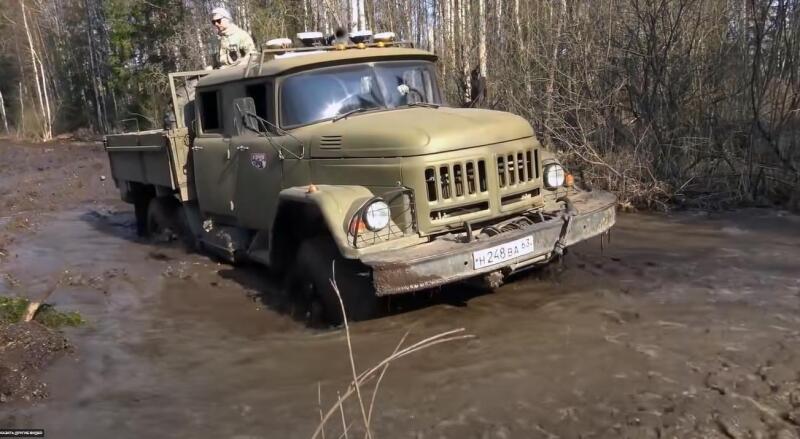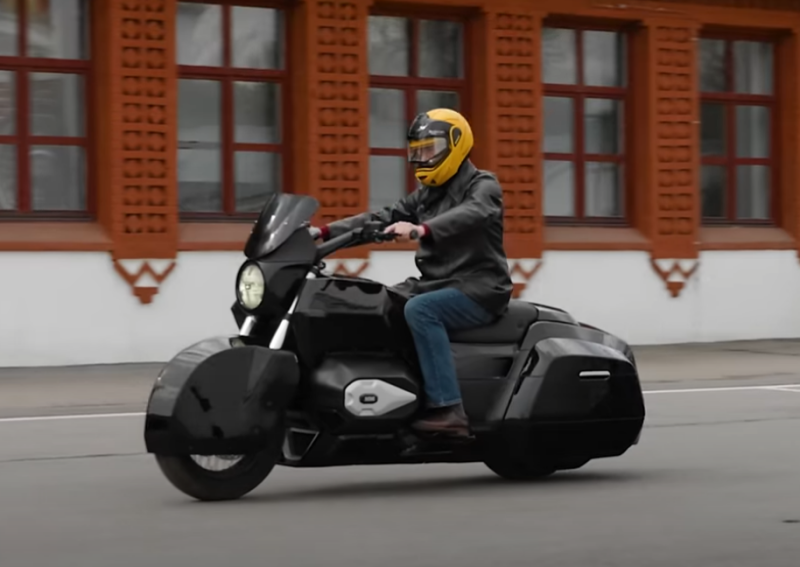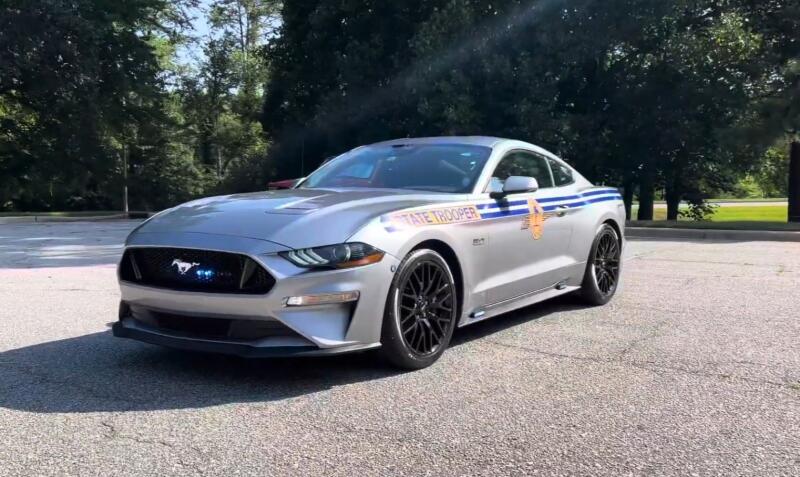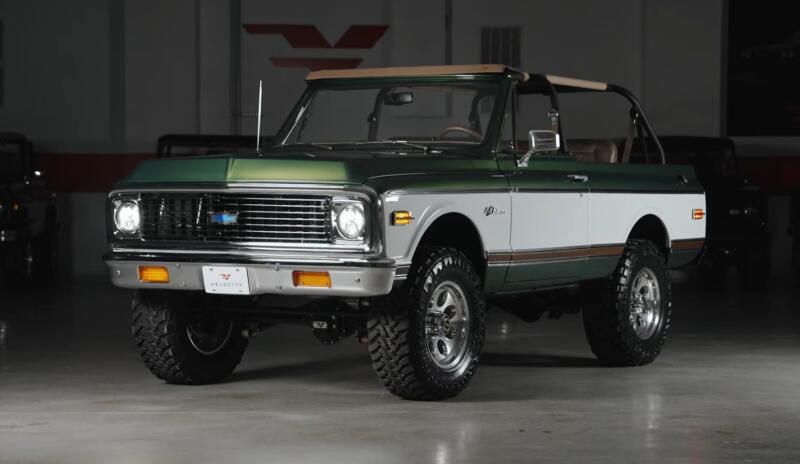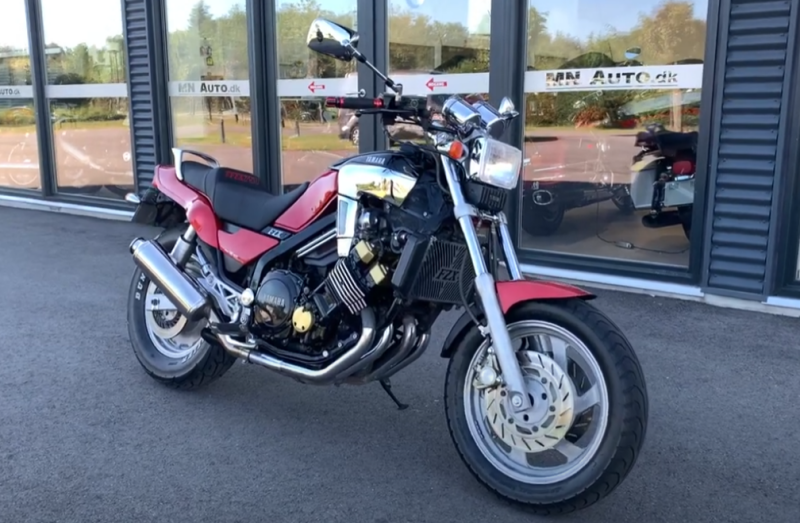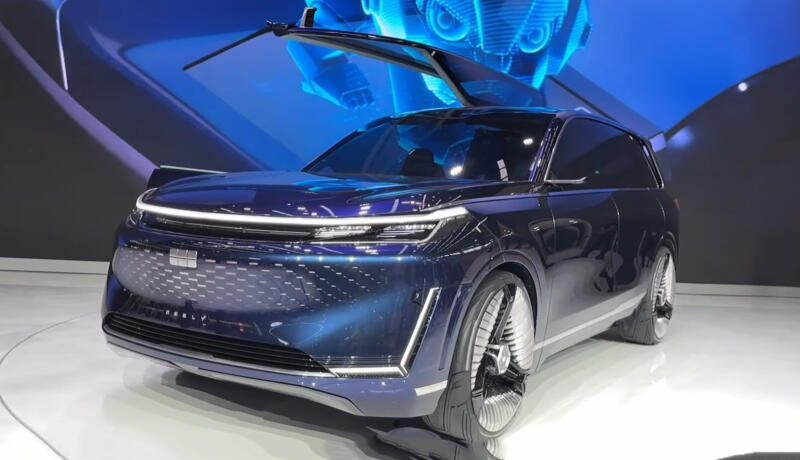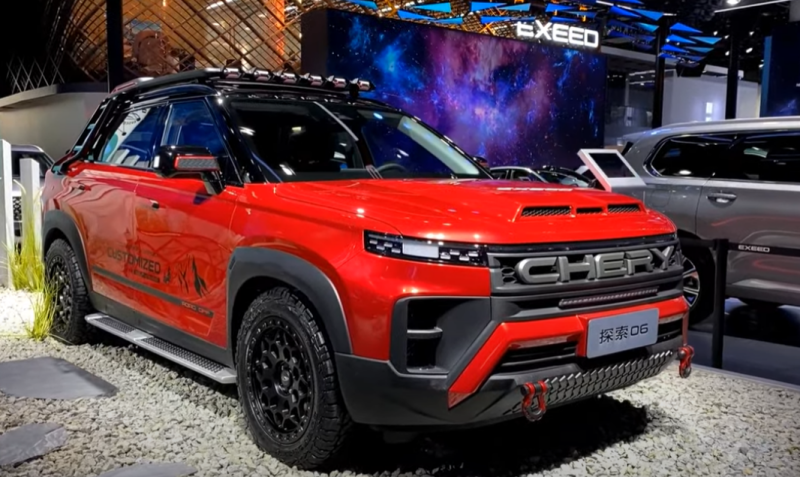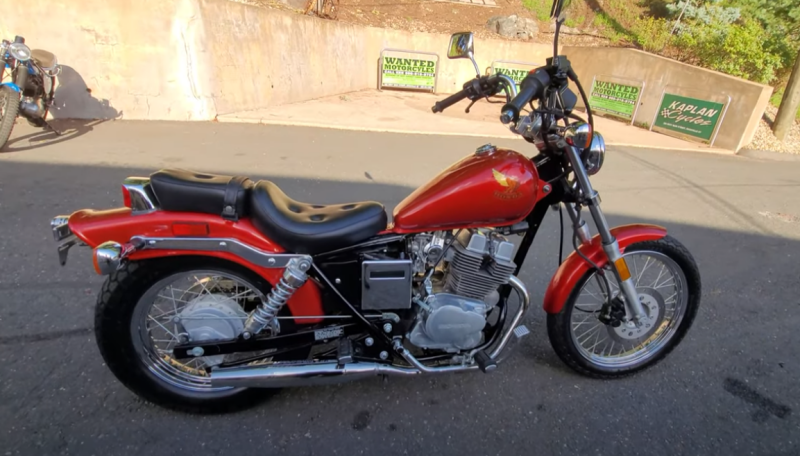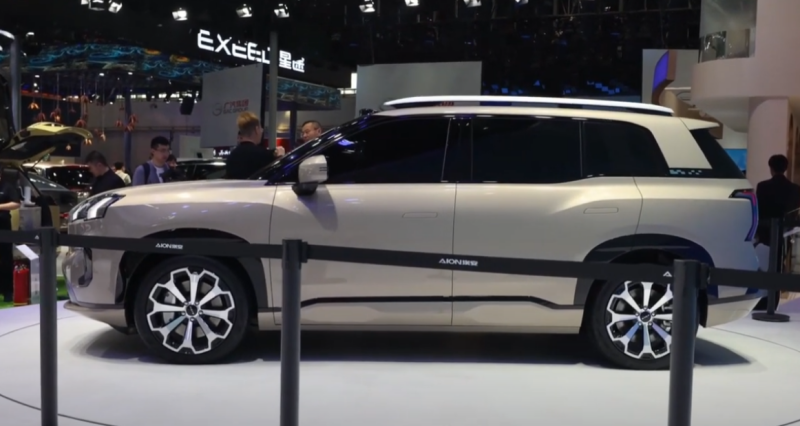In fact, the appearance of the Ural-375 and ZIL-131 can only be confused by a person "not in the know." It is only at first glance that the trucks seem to be twin brothers. It is enough to put them side by side and compare to understand that the cars are even outwardly different. It’s just that they have one style of performance, “Soviet-army”. With the same success, KRAZ can be added to the list of “identical” ones.
Be that as it may, the time of the ZIL-131 has passed, and today it can only be considered as an example of engineering thought from the times of a totalitarian society. And the point is not that the Likhachev Plant itself has not existed for a long time. The truck has become obsolete due to the carbureted V8 engine.
 Most ZIL-131s are now in such a deplorable state. Photo: Youtube.com
Most ZIL-131s are now in such a deplorable state. Photo: Youtube.comThis motor is reliable, easy to repair and maintain, but a consumption of 40-50 liters in standard operation is too much for the 20s of the 21st century. And if you go off-road, then it will easily increase to 60-80 liters.
ZIL-130?
Sometimes you can hear the opinion that the ZIL-131 was developed on the chassis of a civilian model with an index of 130 with minimal changes. In fact, these are completely different trucks, but some nodes have been unified. A common occurrence of that time, allowing you to build up power at the expense of the civilian sector in a matter of days.
Even the engine of the ZIL-131 works with a characteristic sound, although it is completely identical to the 130th model. This is due to different exhaust systems on trucks.
 And this is the usual ZIL-130. Photo: Youtube.com
And this is the usual ZIL-130. Photo: Youtube.comThe appearance of the ZIL-131 is a long history of confrontation between army officials and designers. The latter initially offered a beautiful cabin with smooth "Americanized" contours. The servicemen wanted a second Ural-375 - with the same sharp, ax-cut panels and angular design.
In the end, we came to a compromise:
✅ Panoramic windshield remains, but it was divided into two parts
✅ Wings made flat
✅ Power protection was installed on the headlights
Despite the military orientation, the car turned out to be beautiful - the roughness of external elements, such as “fangs”, is softened by the smooth lines of the cabin.
By the way, flat wings are not exactly a design move, but a practical solution. At that time, it was essentially a necessity - additional equipment could be installed on the body elements, and in the event of an emergency evacuation, personnel could use them as an additional platform.
Why did you need ZIL-131
Some do not understand why in the USSR it was necessary to develop a new truck with a 6x6 wheel arrangement, if there was a ZIL-157. But the answer to this question is simple - the Cleaver has long been outdated, it technically had a lot in common with the ZIS SUVs. It was necessary to improve the technology, so we decided to release a new model, corresponding to the time.
 And this is ZIL-157 for comparison. Photo: Youtube.com
And this is ZIL-157 for comparison. Photo: Youtube.comHowever, the ZIL-157 still did not refuse. This truck has a high cross-country ability. ZIL-131 is better suited for driving on highways, it is faster. For those who are interested, we recall that the ZIL-157 was produced until 1994.
The presence in the range of another manufacturer of a similar truck, the Ural-375D, did not become an obstacle. This car was heavier, larger and differed even more immodest fuel consumption.
Technical features 6x6 WD
At first glance, it seems that the ZIL-131 all-wheel drive transmission scheme is similar to its predecessor with the index 157. There are also no center differentials, and the front-wheel drive is connected hard.
But if you look more closely, it can be noted that the bridges of the ZIL-131 with two-stage gearboxes, the second and third are devoid of an additional cardan drive, which simplifies the design, while at the same time making it more reliable.
 Two ZIL SUVs side by side. "Cleaver" looks frankly outdated. Photo: Youtube.com
Two ZIL SUVs side by side. "Cleaver" looks frankly outdated. Photo: Youtube.comThe inclusion of the front axle occurs from the cab - just click the toggle switch. This is realized due to the presence of an electro-pneumatic mechanism in the transfer case. On the one hand, it greatly simplifies the life of the driver. On the other hand, pure mechanics is in any case more reliable in difficult operating conditions, for which the ZIL-131 was designed.
In order for the car to start without problems in cold weather, it was equipped with a preheater, a kind of Soviet analogue of Webasto, but much more interesting and brutal. We only note that it is included in the engine cooling system. As a rule, on those ZIL-131s that are found today on the used market, the heater does not work - it is often removed or dismantled.
The ZIL-131 has a five-speed gearbox. It is taken from the "civilian" ZIL-130 without changes. The brake system is pneumatic, but the handbrake is drum.
Suspensions are typical for Soviet trucks. Front leaf springs and classic telescopic shock absorbers. The rear suspension is balanced with longitudinal jet rods.
Engine
The engine of the ZIL-131 was taken unchanged from a "civilian" truck with an index of 130. Unlike its predecessor, a model with an index of 157, the new power unit received two additional cylinders. Although the volume increased slightly - less than 0,5 liters.
 The V8 engine still impresses with its guttural growl and fuel consumption. Photo: Youtube.com
The V8 engine still impresses with its guttural growl and fuel consumption. Photo: Youtube.comDiesel was not even considered - firstly, in the USSR in the 60s, these engines were rare. Secondly, the Likhachev Plant did not even have such an engine in development. Thirdly, the customer did not need machines that are difficult to repair on their own. Yes, and gasoline in the USSR at that time was enough in all sectors of the economy.
Despite the fuel consumption, the declared power reserve of the ZIL-131 is impressive - 850 km. This was achieved thanks to the presence of two gas tanks of 170 liters each.
Attempts to switch to heavy fuel
Approximately in the second half of the 70s, the question of the global "dieselization" of all Soviet technology arose. The "first sign" was the Ural-4320, which began to be produced in 1977, although there were KRAZ long before it.
After field tests, everyone immediately understood the clear advantages of diesel technology, and repair teams quickly learned how to restore heavy-fuel engines. For this reason, they also tried to make the ZIL-131 more high-torque and economical.
 Cabin ZIL-131. Photo: Youtube.com
Cabin ZIL-131. Photo: Youtube.comBut the management of the Likhachev Plant did not want to take the easy way, installing YaMZ engines on their cars. Firstly, it was unworthy of such a serious enterprise and caused banal shame in the management in front of the eternal rival - GAZ. Secondly, no one offered them to use YaMZ engines - they were already lacking.
ZIL specialists began working on their diesel engine back in 1972. The first motor was made a few years later. It was named ZIL-645. Initially, this power unit had a volume of 7,6 liters, but at the same time proved to be extremely unreliable.
I had to redo the engine. The designers also added to it a working volume - up to 8,7 liters. It was this motor that was installed on the experimental ZIL-131M in 1978. The power unit was interesting at least because it was multi-fuel. It was possible to pour not only diesel into the tank. The machine could still work not only on gasoline, but also on kerosene.
Unfortunately, the motor was designed too complex for mass production. And the government did not approve of such experiments - in their opinion, the Likhachev Plant should have made carburetor gasoline trucks. Diesel models were to be produced by modern and promising KAMAZ. In 1985, further work with the ZIL-131M was abandoned.
There was also an attempt to introduce into production a partially unified diesel engine, created on the basis of the "native" V8. The motor is not bad, there were even turbocharged versions, but it was produced in small batches. ZIL-131 never received this power unit.
 Handsome, agree! Photo: Youtube.com
Handsome, agree! Photo: Youtube.comOn the chassis of the Soviet four-wheel drive truck, various special equipment was produced, ranging from missile carriers to drilling rigs. In the real sector, this car was quickly replaced by the more practical KAMAZ and Ural, but private traders still use this model to solve problems in difficult conditions.
Of course, in order for the ZIL-131 to bring at least some profit, the engine is often changed to a diesel engine. Remotorization is successfully done both at the service station and in a handicraft way, independently. Moreover, they still prefer to use such equipment as truck cranes or drilling rigs on gasoline engines.
Surprisingly, the production of ZIL-131 continued until 2002, although after the collapse of the USSR, trucks were produced only in small batches. In the automotive market, these cars are still offered. Prices start from 150 thousand rubles.
